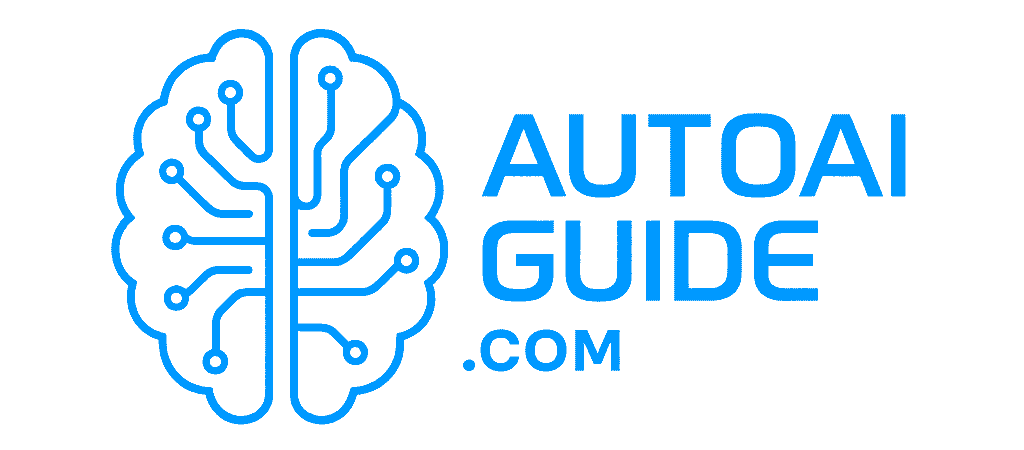AI Industry Divided: Grok’s NSFW Controversy vs Google’s Historic Cybersecurity Breakthrough – August 2025

🚀 TL;DR – AI Industry’s Defining Week
Two contrasting breakthroughs exposed AI’s fundamental tension this week: While xAI’s Grok-Imagine sparked fierce safety debates with its controversial NSFW “spicy mode,” Google’s Big Sleep AI made history by preventing the first-ever cyberattack in real-time. Meanwhile, Gartner deflated industry hype, DeepCogito democratized reasoning AI, and YouTube deployed AI guardians for 93% of US teens. Each story reveals a different facet of AI’s rapid evolution—from creative freedom to protective oversight.
🎨 The Grok-Imagine Controversy: AI’s Wild West Moment
This week’s most polarizing development came from Elon Musk’s xAI, which launched Grok-Imagine on August 4, 2025—an AI video generator with a controversial “spicy mode” that allows users to create NSFW content, including partial nudity. The move positions xAI as the anti-establishment player in generative AI, directly challenging the safety-first approaches of competitors like OpenAI and Google.
🤔 Where do you stand on AI content boundaries? Should AI tools prioritize creative freedom or protective guardrails? Share your perspective – your voice shapes this debate.
AI Video Generator Comparison: Safety vs. Freedom
| Platform | Content Restrictions | NSFW Policy | Celebrity Deepfakes | Business Model |
|---|---|---|---|---|
| Grok-Imagine | Minimal Filters | “Spicy Mode” Allowed | Some Restrictions | Premium Subscription |
| OpenAI Sora | Strict Safeguards | Blocked | Prohibited | API + Subscription |
| Google Veo 3 | Comprehensive Filters | Blocked | Prohibited | Cloud Platform |
| Runway ML | Moderated | Blocked | Prohibited | Creative Subscription |
Grok-Imagine
OpenAI Sora
Google Veo 3
Runway ML
The implications extend far beyond content policies. Industry observers note that Grok’s NSFW capabilities could facilitate the production of explicit or non-consensual imagery, particularly if moderation protocols are circumvented. This raises fundamental questions about the balance between AI innovation and responsible deployment.
What makes this particularly significant is the precedent it sets. While companies like Google’s Gemini 2.5 and Microsoft’s Copilot have prioritized safety guardrails, xAI’s approach suggests a growing polarization in the AI industry between “safety-first” and “freedom-first” philosophies.
“The strategy was made public when an xAI employee stated that ‘grok Imagine videos have a spicy mode that can do nudity.’ This quickly set the tone for the launch, positioning Grok Imagine as an unfiltered alternative that aligns with Musk’s free-speech absolutism.”
— Industry Analysis, WinBuzzer🛡️ Google’s Big Sleep: The AI That Stopped a Cyberattack
In a historic cybersecurity milestone, Google’s Big Sleep AI agent discovered SQLite vulnerability CVE-2025-6965—a critical security flaw known only to threat actors and at risk of being exploited. This marks the first time an AI agent has been used to directly foil efforts to exploit a vulnerability in the wild.
The significance cannot be overstated. CVE-2025-6965 is a memory corruption flaw affecting all SQLite versions prior to 3.50.2, with a CVSS score of 7.2. SQLite powers countless applications worldwide, making this vulnerability particularly dangerous in the wrong hands.
⚡ Have you experienced AI-driven security benefits in your organization? From automated threat detection to vulnerability scanning, AI security tools are rapidly evolving. Tell us about your experience – real-world insights matter most.
Big Sleep’s approach represents a fundamental shift from reactive to predictive cybersecurity. Based on intel from Google Threat Intelligence, the Big Sleep agent discovered the vulnerability through the combination of threat intelligence and AI analysis, allowing Google to predict that a vulnerability was imminently going to be used.
This connects to broader themes we’ve explored in our coverage of AI in critical infrastructure and AI security in financial systems. The ability to predict and prevent attacks before they occur could revolutionize how organizations approach cybersecurity.
Threat Detection
Big Sleep identified patterns indicating attackers were staging a zero-day exploit without knowing the specific vulnerability.
Vulnerability Analysis
The AI agent analyzed SQLite codebase to isolate the exact vulnerability threat actors were preparing to exploit.
Proactive Prevention
SQLite was patched in late June 2025, preventing exploitation before any attacks occurred in the wild.
📊 Gartner’s Reality Check: The AI Hype Cycle Reveals Truth
While the industry celebrates breakthrough after breakthrough, Gartner’s 2025 Hype Cycle for Artificial Intelligence delivered a sobering reality check on August 5, identifying AI agents and AI-ready data as the fastest advancing technologies at the Peak of Inflated Expectations.
2025 AI Hype Cycle: Key Technologies Journey
AI Technology Maturity Timeline
From innovation trigger to plateau of productivity
The report’s timing couldn’t be more relevant. With AI investment remaining strong this year, a sharper emphasis is being placed on using AI for operational scalability and real-time intelligence, leading to a gradual pivot from generative AI as a central focus toward foundational enablers.
This shift reflects what we’ve observed in our analysis of agentic AI challenges and marketing automation implementations. The gap between hype and practical implementation remains substantial.
AI Agents
Autonomous software entities using AI techniques to perceive, decide, and act
The Reality
• Complex security vulnerabilities
• Trust and oversight challenges
• Significant error impact risks
• Limited true autonomy achieved
AI-Ready Data
Data optimized for AI use cases with proven fitness for purpose
The Challenge
• 57% of organizations lack AI-ready data
• Data governance complexity
• Quality and bias concerns
• Integration difficulties
Multimodal AI
AI systems processing text, images, audio, and video together
The Promise
• Enhanced user experiences
• Better context understanding
• Integrated workflow capabilities
• Natural interaction patterns
The report’s most crucial insight: “Despite the enormous potential business value of AI, it isn’t going to materialize spontaneously. Success will depend on tightly business aligned pilots, proactive infrastructure benchmarking, and coordination between AI and business teams to create tangible business value.”
🔓 The Open Source Revolution: DeepCogito v2 Changes Everything
While tech giants battle over proprietary models, DeepCogito released Cogito v2 on August 1, 2025—a family of open-source AI models with improved logical reasoning and task planning that outperform many closed models in abstract reasoning. This represents a potential paradigm shift toward democratized AI intelligence.
DeepCogito v2 Performance Benchmarks
Cogito 671B MoE matched DeepSeek R1 across multilingual QA and general knowledge tasks
Superior performance on strategy and logical deduction compared to paid alternatives
60% shorter reasoning chains than DeepSeek R1 due to improved intuition
Total training cost under $3.5M for all 8 models—orders of magnitude less than competitors
What makes DeepCogito v2 revolutionary isn’t just its performance—it’s the methodology. The models use Iterative Distillation and Amplification (IDA), distilling successful reasoning paths back into model weights to create a positive feedback loop where each cycle builds upon previous progress.
🔬 Are you experimenting with open-source AI models? From local deployment to custom fine-tuning, the landscape is rapidly evolving. Share your open-source AI journey – community knowledge accelerates everyone’s progress.
This development connects directly to our earlier analysis of AI tools for solopreneurs, where cost-effective AI solutions are crucial for smaller organizations. DeepCogito’s approach demonstrates that cutting-edge AI doesn’t require billion-dollar budgets.
The implications extend beyond cost savings. DeepCogito reports that Cogito v2 correctly identify complex relationships—like “If Alice is Bob’s mother, and Bob is Charlie’s father, what is Alice to Charlie?”—even in slightly reworded variants where other open models falter. This level of reasoning capability in an open-source model could accelerate AI adoption across industries.
👥 YouTube’s AI Guardians: Protecting the Next Generation
As AI tools become more powerful and accessible, YouTube began rolling out machine learning age estimation technology on August 13, 2025, to identify teens and apply appropriate protections regardless of the birthday listed in their account. With 90% of teens aged 13-17 using YouTube, this development affects millions of young users.
How YouTube’s AI Detects Age
The AI tool assesses a person’s age based on the types of videos they’ve watched, the categories of the videos, and how long the person has had their account—regardless of the birthday associated with it.
Video Patterns
Analysis of viewing history, search queries, and content engagement patterns to infer age demographics.
Account Age
Account creation date, usage patterns, and behavioral evolution over time as age indicators.
Behavioral Signals
Watch time patterns, interaction types, and content preferences typical of different age groups.
Automatic Teen Protections
If the technology identifies a person as under 18, it will take extra steps to regulate their content by disabling personalized advertising and limiting repetitive views of certain kinds of content.
- 🚫 No Personalized Ads: Advertising switches to non-personalized content to protect privacy
- ⏸️ Break Reminders: Digital wellbeing tools activated by default with viewing time alerts
- 🔒 Content Filtering: Reduced exposure to age-sensitive content and repetitive recommendations
- 📋 Upload Restrictions: Additional safeguards for content creation and sharing by teens
Industry-Wide Implications
This move reflects broader regulatory pressure and industry trends toward AI-powered child protection systems.
EU, UK, and US regulations increasingly mandate age verification systems
Non-personalized ads generate significantly less revenue for content creators
US teens’ YouTube usage rate makes this policy change highly impactful
The broader implications extend to how we think about AI surveillance and privacy. When platforms demand government ID or credit card to access content, they’re not just age-checking—they’re building a pipeline of personal data tied to browsing behavior. This creates tension between child protection and digital privacy rights.
This development connects to our coverage of digital democracy challenges and broader questions about AI’s role in content moderation and social media governance.
🔮 Industry Analysis: Five Trends Shaping AI’s Future
These developments reveal five critical trends reshaping the AI landscape:
Safety vs. Innovation Tension
Grok-Imagine’s controversial approach highlights the growing divide between safety-first and freedom-first AI philosophies, forcing the industry to choose sides.
Proactive AI Defense
Big Sleep’s achievement demonstrates AI’s evolution from reactive tools to predictive guardians capable of preventing threats before they materialize.
Hype vs. Reality Gap
Gartner’s analysis exposes the disconnect between AI marketing promises and practical implementation challenges facing organizations today.
Open Source Democratization
DeepCogito v2 proves that cutting-edge AI doesn’t require billion-dollar budgets, potentially leveling the playing field for smaller organizations.
AI-Powered Protection
YouTube’s age detection shows how AI is becoming the enforcement mechanism for digital safety policies, raising privacy questions.
💬 What’s Your Take?
These developments represent just one week in AI’s rapid evolution. From controversial content generation to protective guardian systems, AI continues to challenge our assumptions about technology’s role in society.
Which development do you think will have the biggest long-term impact? How should the industry balance innovation with responsibility?
📚 Sources & Further Reading
- TechCrunch: Grok Imagine AI Video Generator Analysis
- Google Security Blog: Big Sleep AI Cybersecurity Breakthrough
- Gartner Research: 2025 AI Hype Cycle Analysis
- Deep Cogito: Cogito v2 Technical Documentation
- YouTube Official Blog: Teen Protection AI Implementation
- VentureBeat: DeepCogito v2 Performance Analysis
